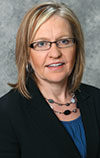Agricultural organizations refer to their top leadership positions as: CEO, executive secretary, executive director, president or chairman. For simplicity, I will refer to the top leadership position with an agricultural organization as CEO.
Due to the size of the agricultural industry, there seems to regularly be openings for CEO positions, from the state to the national level. Turnover can be the result of retirement, demanding schedules, a leader ready for a new challenge or personal reasons, such as family.
Sometimes, a CEO realizes they made a choice that does not match their career goals or is not the right fit for them, and they choose to resign. There is also the situation when the organization does not believe the CEO is meeting their expectations, so the CEO is asked to leave.
Change in an organization can be unsettling. It is time-consuming, expensive and can cause workflow challenges. When the change is the CEO, a stable work environment no longer exists. Yet change has the opportunity to bring positives such as fresh new ideas, creativity and new vision.
When the time comes to hire a new CEO, what should the organization consider? Due to different dynamics and structure of organizations and corporations, there is no handbook with a checklist outlining the steps to hire a CEO.
The challenge is to find that person who can get a checkmark by all those on the interview/hiring team.
Considerations for selecting the right leader
I was fortunate to hear Andy Stanley, a preacher and founder of North Point Ministries (NPM) of Atlanta, Georgia, and leadership author as one of the keynote speakers of Leadercast 2015, a nationwide leadership symposium.
Each Sunday, more than 36,000 people attend one of NPM’s six churches, with another 30 churches viewing by simulcast around the globe. Stanley’s church employs more than 400 people.
His presentation focused on bold leadership and provided an example which caught my attention toward the question of “finding the right person for the job.” Providing a true case scenario from his industry, Stanley said, “The challenge is that growing, large-scale churches are always looking to find someone to lead them who is a gifted speaker and a gifted leader."
"If the gifted leader can’t hold the attention of thousands of people for 20 to 30 minutes, the church isn’t going to grow – and at the same time, there are a lot of good communicators who are not good leaders, so the organization is poorly led,” he said.
Ultimately, the church industry was looking for an individual with a skill set with exceptional leadership and gifted communication – but have come to the realization there was limited growth as a result. “It is rare to find someone to fit this expectation,” Stanley said.
You may be asking: Shouldn’t a leader be a good communicator, and is that person really hard to identify? You are right, often good leaders are good communicators.
But in Stanley’s example, in his reference to a gifted communicator, he is actually referring to the person who fills the role of communicator of the church, the person behind the scenes, keeping the day-to-day functions in place, keeping communication flowing within the church across the key members and staff. The gifted communicator he is talking about uses his or her communication skills to fulfill the management role of the church.
The gifted leader is the person engaging the audience each week and sharing the sermon. The person who draws people to the organization to hear the church’s message and vision.
This person is the leader who brings followers to the church. Stanley explained that once his church stopped trying to find someone who was a great leader and also a gifted communicator, and took the step to leverage the leader’s leadership gift of being that visionary spokesperson and leverage the communicator’s gift in managing the church, growth in his church took off.
Moving forward in selecting a CEO
Hearing Stanley’s example of finding the right person for the right role had me asking: Are agricultural organizations picking the right person for the job? Does the job description truly describe the expectations as well as the skill set needed for the role?
Do organizations have the right structure in upper management positions? Are organizations selecting CEOs and asking them to be leaders and managers at the same time? If so, is this doable and effective?
As I outlined in my March 2014 Progressive Cattleman column: “Are leaders and managers the same?” the role and attributes of a leader and manager are very different. In a summary of that column, attributes of a leader are: one who charts the course or vision, develops environment for change, defines the group’s (organization’s) culture, focuses on the horizon; leaders ask why and challenge the process.
Attributes of managers are: one who conducts organization and staffing, focuses on system and structure, delegates specific tasks, focuses on bottom line; managers ask how and when.
Notice the drastic differences between these attributes. Could it be in the agricultural industry we are asking a leader to do manager duties, or asking someone who is a skilled manager to be that visionary leader, and therefore, we are seeing turnover regularly in our organizations? Are we matching the right person for the job? ![]()

-
B. Lynn Gordon
- Ag Leadership Specialist
- Assistant Professor
- SDSU Extension and Department of Teaching, Learning and Leadership
- Email B. Lynn Gordon








